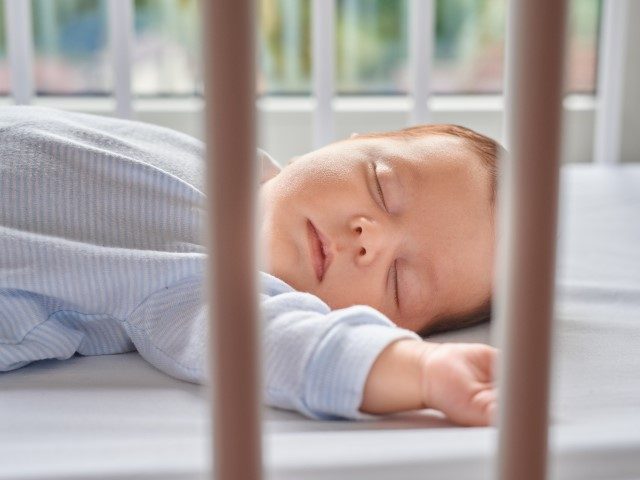The American Academy of Pediatrics (AAP) posted updates Tuesday to safe sleep guidelines for infants.
The guidance was based on approximately 160 scientific articles over the past few years covering risk factors and statistics about sleep-related infant death, Good Morning America (GMA) reported:
Among the new [sic] AAP’s new safe sleep recommendations are that weighted blankets, weighted sleepers and weighted swaddles should not be placed “on or near” a sleeping infant and infants should not wear hats indoors except in the first hours of life or in the neo-natal intensive care unit (NICU).
The AAP also recommends, as it has in the past, that caregivers always place infants to sleep on their backs on a firm, flat surface and should never add “blankets, pillows, padded crib bumpers, or other items to an infant’s sleeping environment.”
The AAP also said infants should sleep in the room with their parents for approximately six months but be placed on a separate, firm, and flat bed.
Bed sharing could increase the risk of an infant getting hurt, according to the Mayo Clinic:
Adult beds generally have softer mattresses than cribs and have lots of blankets and pillows. Though comfortable for adults, these factors can interfere with baby’s breathing or make a baby overly warm. In addition, there’s a risk of the adult inadvertently rolling over onto the baby during sleep or pushing the baby into bedding and causing suffocation.
Falling asleep with your baby on a couch or chair can be even more dangerous because of the cramped quarters. In addition, if your child learns to sleep well in your bed, it can make transitioning to his or her own bed later more difficult and traumatic. As your child gets older, it can be harder to break a bedsharing habit.
Meanwhile, AAP advised parents to use a non-inclined sleeping surface.
“A crib, bassinet, portable crib or play yard should conform to the safety standards of the Consumer Product Safety Commission (CPSC),” the guidance read.
When preparing their baby for sleep, parents should dress them in a onesie or sleep sack, and “[d]epending on the season, it can be lightweight or thick,” according to WebMD.

COMMENTS
Please let us know if you're having issues with commenting.